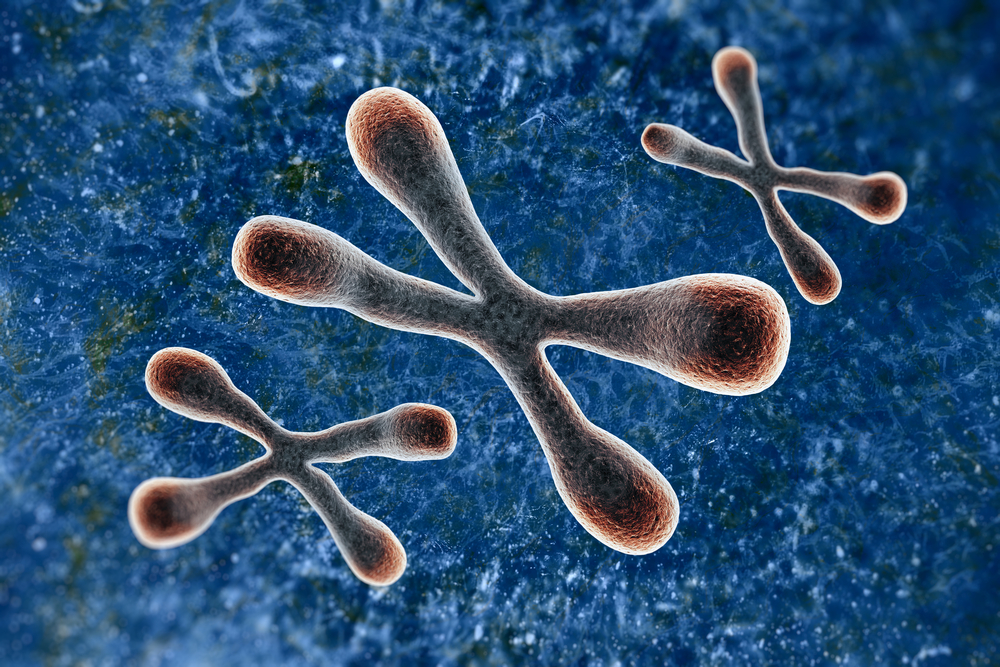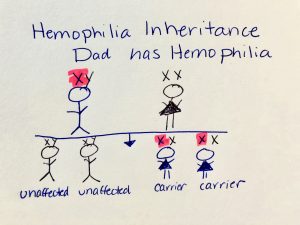Hemophilia Inheritance Graphics Need Updating

Inheritance patterns in hemophilia are a common discussion topic for many reasons. Among the reasons that people seek information about hemophilia inheritance is their desire to better understand if their future children might be at risk for inheriting the disorder. Not only do people express concern regarding their children, but they also worry about their grandchildren, nieces, and nephews inheriting the condition.
Hemophilia A and B are X-linked genetic disorders. This means that the condition is a result of genetic mutations, also known as genetic variants, on the X chromosome. It is passed along from parent to child as the X chromosome is passed along to their children.
Hemophilia inheritance graphics are used to illustrate how hemophilia is passed from mother or father to child. Illustrations increase understanding of the statistical probabilities of each affected parent passing the mutation to the next generation.
I have taken the liberty of drawing primitive examples of the most common graphics used to illustrate these inheritance patterns:
As you can see, if a father has hemophilia, his daughters will be obligate carriers — meaning they must inherit the genetic variant, as it is located on the X chromosome. So all girls will have it.
In this graphic you see that if a mother is a carrier for hemophilia, she has a 50 percent chance of passing it along to her child, male or female.
What is troubling about these graphics is the promulgation of the ubiquitous belief that men get hemophilia and women are merely carriers. Yet these assumptions are actually more than troubling, they are dangerous. With the widespread dissemination of similar graphics, the everyday understanding of hemophilia being a male-only disease is continually reinforced.
A change of graphic narrative
To properly account for the many women who have hemophilia, we need to change the graphic narrative that is widely replicated. I was thrilled to see that one company, Novo Nordisk, has already taken this step by including a graphic on its website that includes the term “lyonization.”
Lyonization is the process by which duplicate X chromosomes are randomly shut off in utero. Theoretically, this would occur in a 50/50 split, allowing a hemophilia carrier to have factor levels high enough to be protective. However, extreme lyonization can occur, which causes carriers of hemophilia to manifest the disease itself. The inclusion of the lyonization possibility in a graphic representation provides validation to the women who have hemophilia but struggle to convince providers that the disease can manifest in women.
It is critical to be mindful of the internalization of disseminated information and the barriers that occur with outdated facts. As the hemophilia community refines the graphic explanations of inheritance patterns, it will increase access to appropriate diagnosis and treatment for women with hemophilia. Every piece of information shared must reflect the realities of hemophilia inheritance as accurately as possible.
***
Note: Hemophilia News Today is strictly a news and information website about the disease. It does not provide medical advice, diagnosis, or treatment. This content is not intended to be a substitute for professional medical advice, diagnosis, or treatment. Always seek the advice of your physician or another qualified health provider with any questions you may have regarding a medical condition. Never disregard professional medical advice or delay in seeking it because of something you have read on this website. The opinions expressed in this column are not those of Hemophilia News Today or its parent company, Bionews Services, and are intended to spark discussion about issues pertaining to hemophilia.









helene
great work thanks
Laureen Kelley
Good points, but the Novo Nordisk graphic still needs updating. Hemophilia is not a "disease" but a disorder. If we are going to be very particular about including females like this, and we should, we should be ver clear about classifying what hemophilia. Disease is is not. Corona virus is a disease. Ebola is a disease. Cancer is a disease. Hemophilia is a disorder.
G Shellye Horowitz
You bring up a good point and many need to shift language... this is further complicated with disorders that have “disease” in their name - like Von Willebrand Disease (VWD). I think this is an evolution in terminology, just like the evolution from carrier to hemophilia that we all need to start to implement!